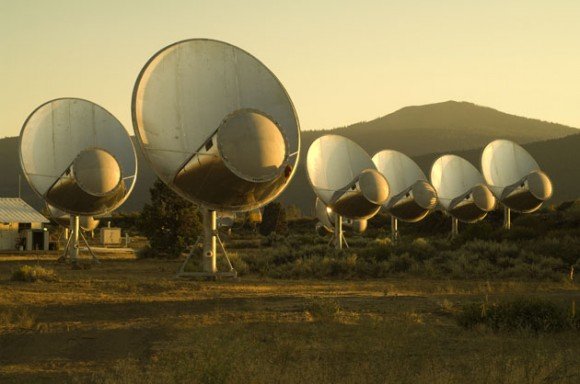The SETI program resumes operation with the detection of exoplanets Kepler-22b

After six months of downtime due to financial problems, the ATA (Allen Telescope Array) radio telescope resumes its work , and the SETI search program for extraterrestrial civilizations will unfold in full force. The first target for ATA antennas will be the Kepler-22 star, 600 light years from the solar system. It belongs to the same spectral class as the Sun, although it is slightly smaller in size.
A few days ago, NASA held a press conference and reported that within the “habitable” zone around the Kepler-22 star a planet with a diameter of just 2.4 Earth-wide is drawn, the density is not yet known. In the entire history of the search for terrestrial planets, Kepler-22b has become the smallest, which is located within the “habitable” zone and allows it to be on the surface of liquid water. According to scientists, if Kepler-22b is a solid, rather than a gaseous planet, then there should be a completely comfortable temperature for life of about 21 ° C.

')
The discovery of Kepler-22b and other exoplanets with the Kepler telescope came in very handy. People have aroused an interest in space research, and the Air Force Space Command has allocated money to renew the SETI program. Together with private donations, this was enough to resume the work of the antenna array.
Although the SETI @ Home distributed computing project is funded from other sources (much less money is needed there, and there are no problems yet), SETI @ Home will now have fresh data to process. Over the next two years, the Kepler-22 star will be listening in the entire range from 1 GHz to 10 GHz, in channels of one hertz width.
Source: https://habr.com/ru/post/134176/
All Articles